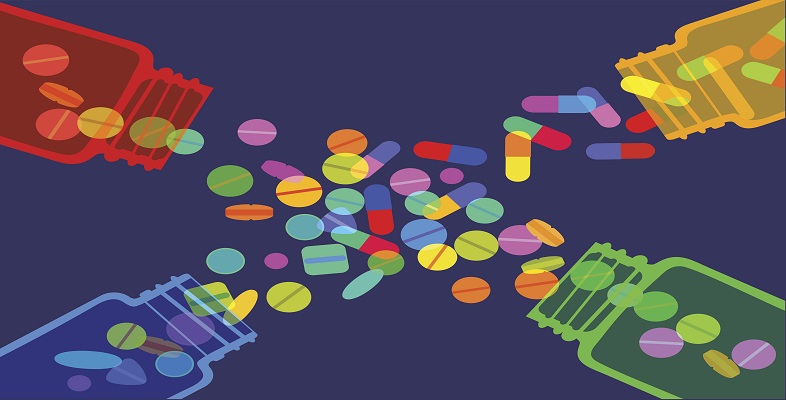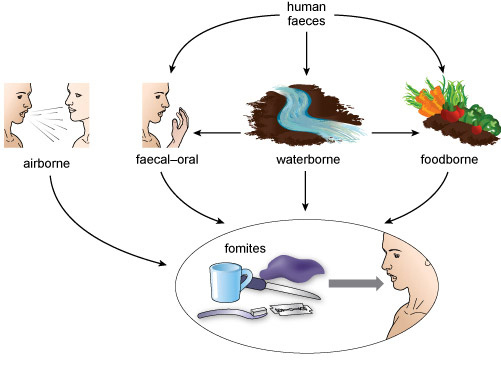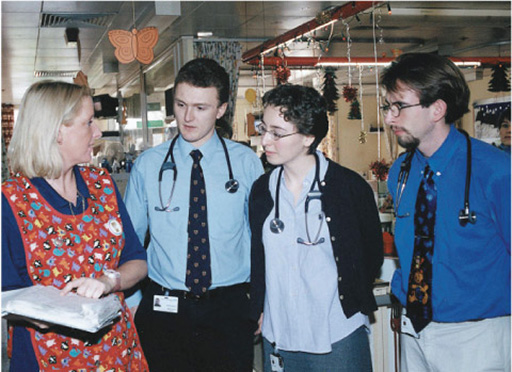2.1.2 Indirect transmission of pathogens
Indirect transmission occurs when an infected person sheds bacteria into the air, water, food or onto other objects in the environment (known collectively as
Fomites are objects in the environment, such as door handles, cups and pens, that are routinely touched and can transmit infections. Healthcare-associated infections (HCAIs) can easily be indirectly transmitted to susceptible patients via fomites. A quarter of HCAIs are caused by antibiotic-resistant bacteria such as MRSA.
In the next activity, you will look at fomites that might transmit HCAIs.
Activity 2 Fomites and healthcare-associated infections
Identify the fomites in this picture of hospital staff in 2001 that might transmit HCAIs.
Answer
Neck ties, stethoscopes, long-sleeved clothing, hospital badges worn at waist height and wrist watches could all brush against patients with infections and act as fomites, transmitting the infection to a susceptible individual. Consequently, in UK hospitals today, all staff must have their arms bare below the elbows and wrist watches and neck ties are banned.
Sanitation and hygiene both play an important role in preventing indirect transmission via the routes summarised in Figure 5. Next, you will look at how sanitation and hygiene prevent


